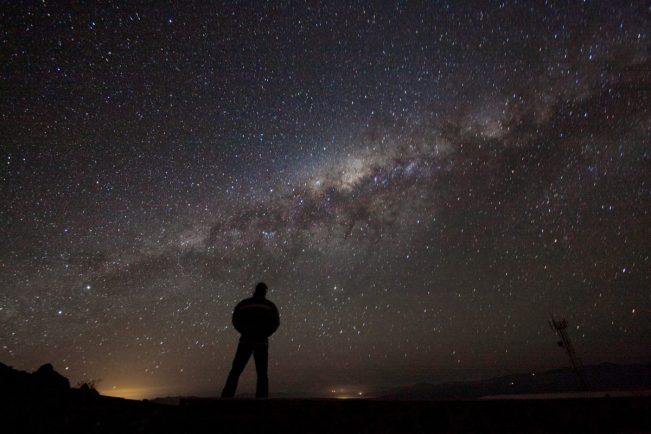STARGAZING scientists from the University of Warwick have helped discover a new habitable Earth-sized planet 40 light years away.
The planet, named Gliese 12 b, has an estimated surface temperature of around 42 degrees celsius – the same temperature as the 2022 UK heatwave – and is one of the few known rocky planets where humans could theoretically survive, if they can find a way of making the 235 trillion plus mile journey.
But scientists are still unsure of what – if any – the atmosphere of Gliese 12 b looks like.
The planet orbits its version of the Sun every 12.8 days and is a similar size to Earth.
The scientists are part of an international team who have worked with NASA and ESA to discover the planet using NASA’s TESS (Transiting Exoplanet Survey Satellite) and ESA’s CHEOPS (CHaracterising ExOPlanet Satellite).
The planet’s equivalent of the Sun, called Gliese 12, is a cool red dwarf located constellation Pisces. The star is only around a quarter of the Sun’s size, with about 6 per cent of the Sun’s surface temperature.
Warwick astrophysicist Dr Thomas Wilson was involved in the discovery, using data from NASA and ESA’s satellites to confirm the planet’s existence and characteristics like its size, temperature, and distance away from Earth.
He told The Observer: “This is a really exciting discovery and will help our research into planets similar to Earth across our Galaxy.
“Thrillingly, this planet is the closest Earth-sized and temperature planet we know. The light we are seeing now is from 1984 (40 years ago) – that’s how long it has taken to reach us here on Earth.
“Planets like Gliese 12 b are very few and far between, so for us to be able to examine one this closely and learn about its atmosphere and temperature is very rare.”
Larissa Palethorpe, co-lead of the study and doctoral student at the University of Edinburgh and University College London, was equally excited at the discovery.
She explained: “This is a unique candidate for further atmospheric study that may help unlock some aspects of our own solar system’s evolution.
“Earth remains habitable, but Venus does not due to its complete loss of water. Gliese 12 b’s atmosphere could teach us a lot about the habitability pathways planets take as they develop.”
The distance separating Gliese 12 and the new planet is less than a tenth of the distance between Earth and the Sun. The planet receives 1.6 times more energy from its star as Earth does from the Sun.
One important factor in retaining an atmosphere is the storminess of its star. Red dwarfs tend to be magnetically active, resulting in frequent, powerful X-ray flares. But analyses by scientists conclude that Gliese 12 shows no signs of extreme behavior.











